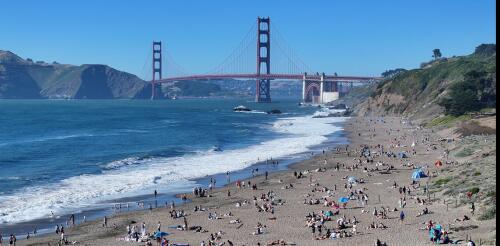California
Atmospheric rivers – those long, narrow bands of water vapor in the sky that bring heavy rain and storms to the U.S. West Coast and many other regions – are shifting toward higher latitudes, and that’s changing weather patterns around the world. The shift is worsening droughts in some regions, intensifying flooding in others, and putting water resources that many communities rely on at risk. When atmospheric rivers reach far northward into the Arctic, they can also melt sea ice, affecting the global climate. In a new study published in Science Advances, University of California, Santa Barbara, climate scientist Qinghua Ding and I show that atmospheric rivers have shifted about 6 to 10 degrees toward the two poles over the past four decades. Atmospheric rivers on the move Atmospheric rivers aren’t just a U.S West Coast thing. They form in many parts of the world and provide over half of the mean annual runoff in these regions, including the U.S. Southeas...
The U.S. Supreme Court will test how flexible the EPA and states can be in regulating water pollution under the Clean Water Act when it hears oral argument in City and County of San Francisco v. Environmental Protection Agency on Oct. 16, 2024. This case asks the court to decide whether federal regulators can issue permits that are effectively broad orders not to violate water quality standards, or instead may only specify the concentrations of individual pollutants that permit holders can release into water bodies. My research focuses on water issues, including the Clean Water Act. This case involves both federal and state authority to issuing permits, and it will be interesting to see where the court focuses. While justices have been willing to limit the EPA’s authority under the act, they traditionally have allowed states broad authority to protect water quality. Thus, while some fear that this case is yet another occasion for the court to limit the EPA’s authorit...

